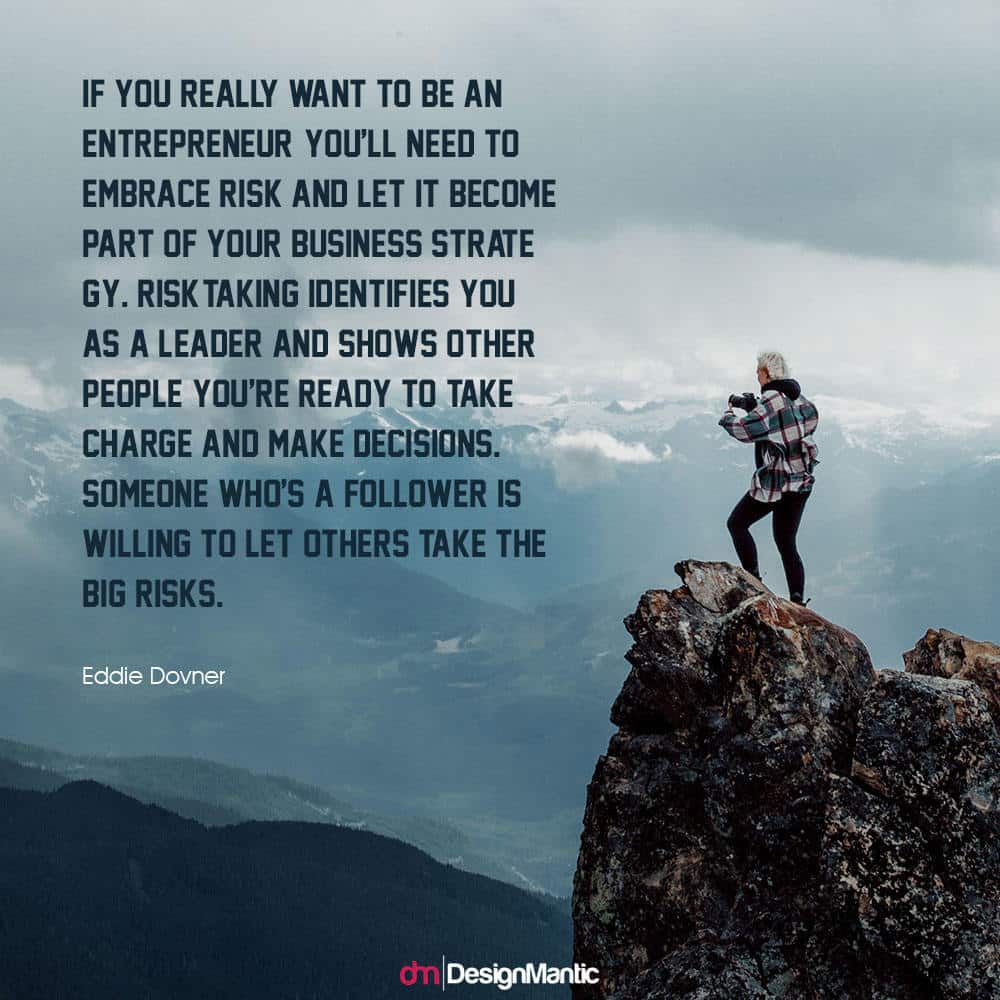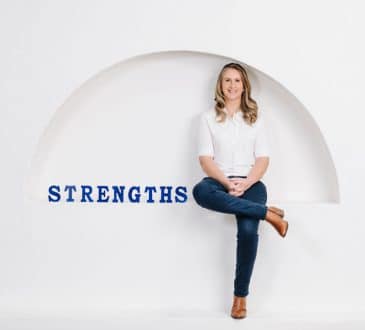5 Things I Learned From Running A DIY Design Company

Kids of all ages have a superhero whom they like to become when they grow up. I, on the other hand, admired the thrifty yet wealthy business magnate and an exceptional adventure capitalist Scrooge McDuck.
I remember exactly how Scrooge came from Scotland to the US in search of a job. He learned one lesson and hardwired it into his mind: Work smart, not hard.
From scratch, Scrooge went on doing odd jobs to saving and investing money in profitable businesses and kept growing his business. The animated series was fun to watch, but it made me contemplate my future moves. It sounds funny how I took serious life and business lessons from a cartoon character, but as a kid, I had earned my share of business wisdom from the cabin-boy-turned-business-mammoth.
How I Stumbled Across DesignMantic?
When initiating my online business, I had a vision, like every brand owner.
Since I wanted to help small businesses thrive, a vision too big didn’t seem small for this one. This is where the idea of an affordable logo design company struck me as an inspiration from the above.
From graphic design services to online DIY logo maker tool, DesignMantic progressed by leaps and bounds in order to fulfill its vision to grow itself and let others thrive. It is now one of the recognized names worldwide for delivering exceptional logo design services and 360-degree branding solutions.
You see, a vision or a long-term goal is like a renewable resource for a business. Like sunlight, it keeps the life of your vision intact directly or indirectly. It nurtures the ideas, plans, aims, objectives, and actions that are yet to become a part of your progress.
When DesignMantic started functioning like a full-fledged logo maker, it wasn’t hard to predict where things were going. As it grew, we introduced new ideas and concepts of design into the platform and ultimately, it became the go-to logo resource for anyone looking for inspiration and ideas.
What I’ve Achieved So Far
Not to brag, but by using my skills, training, and knowledge, I managed to exercise my expertise and tried to avoid the potential pitfalls in the marketing domain.
Things I Learned And Online Businesses Should Learn Too
I absolutely love this part. The lessons I learned – from beginning my career to having aced the DIY design industry – are the valuable gems I’ve managed to pick up on my way to business success.
They say that if you’re wise enough, you learn from your own mistakes, but you’re the wisest if you learn from the mistakes of others.
Scrooge’s advice was commendable, but I had to stick to this one for real-time success. I decided to learn from the mistakes of others, but the lessons I earned from my own mistakes helped me help others in need. And this is what I care about most: helping others.
From mistakes made to the lessons earned, I give you the 5 things I learned from online business venturing. I hope these prove useful to you as they’ve been useful to me.
Learn To Take Risks
No ever business was as great when it started. When I look back, I see the old me deciding to whether take a risk or not. I took me some time to get over the fact that I have to learn to take risks and lose the fear of failure.
Businesses fail all the time. There I said it. It wasn’t that hard, was it? It actually wasn’t.
Even small successes mean a lot if you take heed from the examples around you. And as we’re talking about risks, challenges come naturally with them. One of these challenges is the competitive risk that you, as an entrepreneur, have to venture in to.
The market demands a working product that you and your competitors are striving to deliver. Now, the competitive risk steps in when you venture into introducing a product or service that provides more or less relative chances of failure and success and accept the risks associated with it.
During its initial years in the business, DesignMantic was challenged with competing with other companies already present in the market. I decided to take risks, but before that, I turned to the SWOT analysis.
SWOT stands for Strengths, Weaknesses, Opportunities, and Threats. It lets you minimize the risks both internal and external factors present and contribute to your progress. Focusing on what’s going on in and outside your business lets you devise you strategies accordingly.
To give you an idea of how businesses conduct their SWOT analysis, I’ll share an example with you. Sedibeng Breweries is a brewery in Botswana known for its company culture, quality branding, and commitment to distribution of their product. However, it faces the threat from major breweries taking control of the demand and supply chain in the field, Sedibeng Breweries can still score a local advantage due to its strengths.
If you take a risk and you succeed, it means that the risk you took favored your success. In case you fail, you earned a lesson, an open secret of what works for you and what doesn’t.
Don’t be afraid to fail; be afraid not to try again.
Growth Takes Time
If you hear about a business making millions within days or months, then know that it’s nothing but just a hyperbole.
Every successful entrepreneur, regardless of his niche, is driven by passion to keep growing. Take Ryan Robinson, for example. He’s a writer, part-time entrepreneur, and a content marketing coach. Ryan started his first side-business ‘iStash’ (cellphone case business) during his college days. But after a while, his business ended up in as a tragic fail.
That failure added fuel to his passion and he developed Case Escape, a technology-aided side-business that enabled users to design and print their own smartphone cases. And guess what? He grew it from zero to more than $160, 000 in just 12 months. Within 5 years, Ryan has consulted for content marketing for big names like LinkedIn, Adobe, Google, and Forbes to name a few.
The passion to grow coupled with the determination to succeed is what makes an entrepreneur keep hustling and moving. But calculating the risks becomes one of the objectives that has to be considered side by side. As a content marketing coach, Ryan probably realizes how important it is for a business to rank to the top in the Google search system.
During my journey, I realized that nurturing a business is like nurturing a life. You have to set foundations, provide the necessary requirements as well as consider various factors for its growth. The risky thing with the Google search and SEO is that you have to optimize and update your website according to Google modifications as well as manage relevant keywords.
By time, I figured out that both take time and skills to foresee the unguaranteed risks that lie ahead, which is why I kept trying by being keyword selective and focusing on on-site and off-site optimization strategies. You can even outrun the bigger competitors using SEO. You must have to have the exact knowledge of it.
Remain Optimistic
As I’ve mentioned before, a solid business isn’t built in a day. It might take you months and years to strengthen your business foundations, and as you know, challenges always remain at your disposal to make or break you.
What about optimism? It isn’t just necessary; it’s highly important that you maintain a positive attitude towards the failures you come across. And in fact, the more an entrepreneur faces failure, the more optimistic he gets.
Ok. So having irrational optimism might seem frivolous, but it’s a thing. Failure prepares you for future business prospects, but what contributes more to your optimism is the level of user experience (UX) you’re delivering.
UX is useful for entrepreneurs who are focused mainly on adding innovative solutions to their list of tech-related strategies. Understanding how a simplified UX can contribute to your innovation can help you enhance your problem-solving skills.
As a graphic design company addressing startups to help them generate their potential, my company struggled with improving the user experience. With a vision of innovation, we approached to simplify the UX so that our users – regardless of their age and respective experience – can deploy our products with utmost ease.
As easy as it sounds, simplifying UX takes considerable measures like optimizing your web layout and product specifications as well as removing the visual, cognitive, and usability complexity.
Sure, there are several uncontrollable factors me and you’ve confronted at some point in our lives. The key to getting through all this to rise above your problems and think about what you could do instead of sitting and worrying about your situation.
Just remember, worrying never solved anything.
Don’t Let Competition Hinder your Struggle
If you view it from my perspective, competition is nothing more than an uninvolved bystander that can distract you from focusing on your own struggle.
In order to have your SEO strategies work effectively, you need to come up with a responsive web design that not only enables you gets ahead of the competition, but also adjusts to the various device formats – especially your cellphone.
A recent report indicated that the search order of 79% of overall keywords and 47% of the keywords on a scale of 1-20 was seen different on desktop and mobile phone SERPs. And with that in mind, mobile phones alone generated more than 50% of the worldwide web traffic.
When DesignMantic was launched, Smartphones were there. So, they already had a version that was specifically designed for mobile. Later, when responsive design became a thing, we ended up having a single responsive website.
The struggle was making the website responsive for smaller screens, plus, keeping it workable i.e. people can make logos right through those screens. We tried to make sure that our tool’s functionality is not compromised during the process.
However, do keep your hindsight sharply fixed on what your competitors are up to, without losing your effort. This is a lesson what Scrooge reminds me of all the time.
New Business Means New Challenges
Integrate this into the motherboard of your mind: a new business will offer new challenges. You might face the basic challenges that every business confronts initially and each offers its share of risks and threats.
These challenges include issues related to finances, scalability, the organization, finding the right people and integrating and upgrading technology. Every step you take will have benefits and challenges alike.
Indeed, DesignMantic did face these challenges, but with an empowered workforce that shared the same vision from top to the bottom of its organization, this startup cemented its affirmed progress. If you need help, ask for it. If you’re asked for help, then give support. Let me share with you my favorite quote from Seth Bannon, the co-founder and CEO of Amicus:
“Don’t be a lone wolf. Lean on the experience and smarts of your teammates, investors, and mentors to help solve the tough problems and take advantage of the opportunities.”
You have to cross these hurdles; if you’re keen enough, let your instincts and trends guide you into foreseeing the upcoming objections put forward by time.
It Isn’t The End Yet…
Never ever compromise your struggle for something you’re worth. Just because you’re starting from scratch doesn’t mean that you’ll be deprived of the fruits of your efforts.
Just keep up the good work and make your future self proud!
Have you read?
# Best Universities In The World For 2018.
# Best Fashion Schools In The World For 2018.
# Best Business Schools In The World For 2018.
# Best Hospitality And Hotel Management Schools In The World For 2018.
# Rich List Index: The World’s 100 Billionaires; Meet The Richest People On Earth.
Add CEOWORLD magazine to your Google News feed.
Follow CEOWORLD magazine headlines on: Google News, LinkedIn, Twitter, and Facebook.
This report/news/ranking/statistics has been prepared only for general guidance on matters of interest and does not constitute professional advice. You should not act upon the information contained in this publication without obtaining specific professional advice. No representation or warranty (express or implied) is given as to the accuracy or completeness of the information contained in this publication, and, to the extent permitted by law, CEOWORLD magazine does not accept or assume any liability, responsibility or duty of care for any consequences of you or anyone else acting, or refraining to act, in reliance on the information contained in this publication or for any decision based on it.
Copyright 2024 The CEOWORLD magazine. All rights reserved. This material (and any extract from it) must not be copied, redistributed or placed on any website, without CEOWORLD magazine' prior written consent. For media queries, please contact: info@ceoworld.biz
SUBSCRIBE NEWSLETTER











